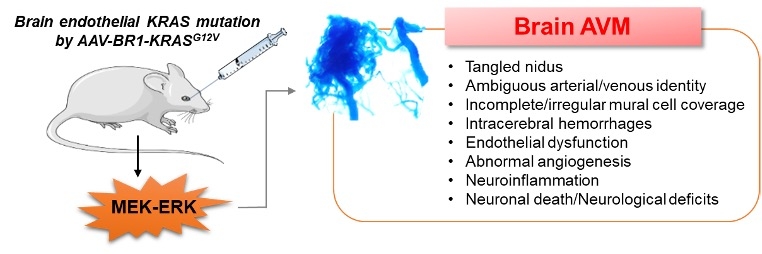You are here
Cellular and molecular mechanisms of brain arteriovenous malformations
Speakers
Abstract
Brain arteriovenous malformation (bAVM) is a tangle of blood vessels with aberrant connections between arteries and veins without an intervening capillary bed. Although bAVM is rare, bAVM patients are at high risk of life-threatening intracerebral hemorrhages (ICHs). However, the treatment options for patients are limited, primarily relying on surgical methods, which can lead to neurological deficits or death. No pharmacologic drug is available, primarily because of the poor understanding of pathophysiologic mechanisms in bAVM. Clinical studies have recently found endothelial cell (EC)-specific somatic activating KRAS mutations in up to 76% of sporadic bAVMs, which account for over 95% of bAVM cases. By KRASG12V overexpression in mouse brain ECs using AAV-BR1, we confirmed that KRAS mutation is sufficient for bAVM development and established a novel animal model of bAVM that displayed salient features of human bAVM. Using the novel clinically relevant mouse model of bAVMs, our current research focuses on identifying cellular and molecular mechanisms underlying bAVM pathophysiology.


